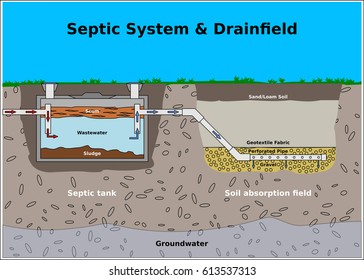

With the tracer dye tablets, you just flush them in the toilet and then wait for a maximum of 2 days. In addition, you can inspect the septic tank non-intrusively by using the tracer dye tablets. Firstly, you can remove the lid in order to assess the scum and sludge layer. Inspecting the tankĪfter you have located your septic tank, it is important to asses it and its contents. you can also use a thin steel rod to probe the ground for the exact location of the tank as you continue digging. Do not be too aggressive with your shovel to avoid causing damage to the pipes. However, it is possible for it to be deeper based on several factors including cultivation and other human activities on the property. Most modern septic tanks will have their lids located centrally and the lid should ideally be within 3 feet of the ground surface. Septic tanks are usually made of concrete, fiberglass, or plastic and they can be oblong, spherical, or rectangular in shape. If the septic tank is underground, you might need to dig in order to uncover it. The strongest signal will be near the inlet area of the septic tank You can use a flushable transmitter that is flushed in the toilet and then the transmitter is tracked with a receiver.In order to avoid interfering with the readings of the detector, do not wear footwear that has steel or any other metal. If the septic tank lid is underground, you can use a metal detector to locate it.The following tips can help you locate the septic tank in such and other related scenarios. But it is also possible that the septic tank lid could be underground especially for old houses. In some cases, a septic tank riser may have been installed and that will make it easy to locate your septic tank. The lid of the septic tank should be visible. Search around the house starting from the outlet and work your way in a circle until you locate the septic tank. This means that it could be possible for the tank to be located around a corner. The septic tank will be a couple of meters from the house and the outlet pipe could be at an angle of 30 or 45 degrees. Once you have located the sewer outlet in your basement, use it to determine where it exits your house on an outside wall. You should now have a general direction of the septic tank and drain field. It should be leading to the sewer outlet pipe. Once you have located it, flush a toilet and listen to the pump in order to establish where the sewage is being pumped to. Sometimes, a lift pump may be installed in the basement for purposes of pumping the sewage out of the building. Just search for access covers or a structure that could be hiding it.

The cleanout could be located behind a wall or in a closet. This pipe is typically located in the basement of the house and it is usually a 4” black pipe with a cleanout. The sewer outlet pipe can be a good place to begin your physical examination of the property. If you are unable to trace this diagram, you will have to carry out further investigation on the property to discover the location of the tank. This diagram can help you to pinpoint the exact location of both the septic tank and the drain field. If the installed system contained some electrical components, the diagram could be in the regional building department offices. If you have the contact information of the contractor, you can request them for the diagram and then you can use it to locate your septic tank. If not, you can ask for a copy of the diagram from the local authority. The contractor who designed and installed the septic tank on your property should have filed an as-built diagram at the local health authority. Steps to follow to locate your septic tank and drain field Here are a couple of steps you can follow to locate your septic tank. But you cannot carry out maintenance procedures if you don’t know where the tank is located. For instance, you will be required to pump it frequently depending on the local regulations. As a homeowner, it is upon you to operate and care for your septic system in order to prevent its failure. The septic system is made up of a septic tank, a drain field, and the plumbing. Houses that are not connected to the municipal wastewater management system rely on onsite septic systems for receiving and treating wastewater.


 0 kommentar(er)
0 kommentar(er)
